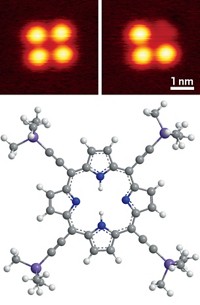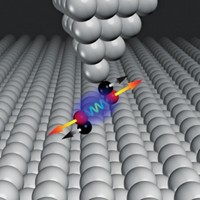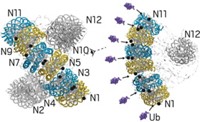Advertisement
Grab your lab coat. Let's get started
Welcome!
Welcome!
Create an account below to get 6 C&EN articles per month, receive newsletters and more - all free.
It seems this is your first time logging in online. Please enter the following information to continue.
As an ACS member you automatically get access to this site. All we need is few more details to create your reading experience.
Not you? Sign in with a different account.
Not you? Sign in with a different account.
ERROR 1
ERROR 1
ERROR 2
ERROR 2
ERROR 2
ERROR 2
ERROR 2
Password and Confirm password must match.
If you have an ACS member number, please enter it here so we can link this account to your membership. (optional)
ERROR 2
ACS values your privacy. By submitting your information, you are gaining access to C&EN and subscribing to our weekly newsletter. We use the information you provide to make your reading experience better, and we will never sell your data to third party members.
Biological Chemistry
Yardstick Measures Cysteines On The Move
Fate of one cysteine among many is detectable with atomic force microscopy
by Carmen Drahl
October 10, 2011
| A version of this story appeared in
Volume 89, Issue 41
Relying on tiny tugs from an atomic force microscope, a new technique shows promise for measuring the dynamics of cysteine residues’ reactivity in proteins (Nat. Chem., DOI: 10.1038/nchem.1155). Many proteins derive structural integrity from multiple disulfide bonds between cysteine residues. But in nascent or actively folding proteins, cysteines are on the move, pairing transiently before switching partners in the search for a stable configuration. Julio M. Fernández of Columbia University and colleagues sought to disentangle the dynamics of an individual cysteine in this type of complex environment. They tethered a section of the muscle protein titin containing multiple disulfides to a custom atomic force microscopy (AFM) setup and yanked on it in the presence of a nucleophile to uncage a reactive cysteine thiol group. They could tell which of the two sulfur atoms in a nearby disulfide was attacked by the cysteine through AFM measurements, which revealed how far the resulting protein product could extend. The team says its technique could also be used to monitor competing pathways in other reactions that involve thiol groups.





Join the conversation
Contact the reporter
Submit a Letter to the Editor for publication
Engage with us on Twitter